

Subscribe to EcoJustice Radio:
With Environmental Injustice and Sea Level Rise, the Atlantic Coast Faces an Uncertain Climate Future
In the coming decades, at least thirteen million coastal U.S. residents will have to pack their bags and move from their homes, rising sea levels and superstorms put lives at risk and cause billions of dollars in damages. In the popular tourist town of Charleston, South Carolina, climate denial, widespread gentrification, over development, and racial issues compound. The city, like so many other coastal regions across the world, has no workable plan to relocate its most vulnerable populations away from the path of harm.
Harvard Law Professor and Author Susan Crawford tells the story of a city that has played a central role in this country’s painful racial history since the early 1800s and now, as the waters rise, the city stands at the intersection of climate and race. In her book, Charleston: Race, Water, and the Coming Storm, Susan Crawford puts out a well-researched call for climate adaptation and mitigation, guided by Black community leaders whom she documents with in-depth narratives.
STORY: Debunking the Skeptics: Real Solutions For A Clean, Renewable Energy Future
Some say a sea wall is the answer, others find the suggestion to be an expensive undertaking that falls short of impending climate predictions. So what would it mean to uproot an entire town due rising sea levels and flooding neighborhoods?
In this show we discuss the issues Charleston and other similar cities face and how long term planning and respectful engagement and treatment of local communities of color can result in necessary solutions.
For an extended interview and other benefits, become an EcoJustice Radio patron at https://www.patreon.com/ecojusticeradio
STORY: Rising Tides, Retreating Homes: California Against the Sea
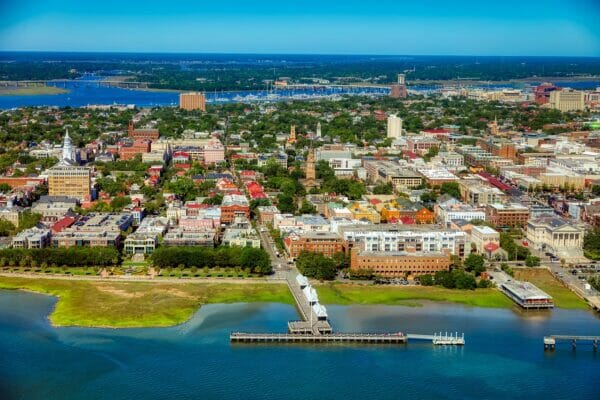
Excerpts from the Interview with Author Susan Crawford
Jessica Aldridge: Susan, you’re going to discuss the important topics in your book that is named Charleston: Race, Water, and the Coming Storm. And I want to start by painting a picture of Charleston, South Carolina. Can you provide us a description of the topography of that area, how large it is? What about the colonial structures in the southern peninsula? It’s a gorgeous place.
Susan Crawford: Well, imagine how beautiful it appeared to a group of people getting off a boat in 1670 thereabouts from England. They’d shown up with slaves, enslaved people, and were landing on what has now become the tip of the historic peninsula of Charleston. At that point, it’s just a sandbar with waving marsh grasses and marsh all, all around it. That small peninsula, what we now think of as the historic city of Charleston, about 6 square miles, most of it over time, has been filled in. The marsh has been covered with trash and human remains, all kinds of junk to provide the substructure of that historic peninsula. And over the centuries, since that first landing, Charleston has sprawled over its marshlands to the east and west of the peninsula and now covers about 125 sq. miles, give or take. So, 90% of the population of the city of Charleston actually lives off the historic peninsula. And a very small number of people, and now almost exclusively white people, live on the historic peninsula, which is about six to nine square miles. The beautiful large houses that people think of when they’re visiting tourists are on the southern tip of that peninsula over again, what used to be marshland mostly.
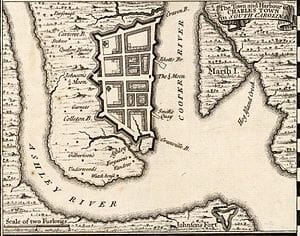

Jessica Aldridge: And you just alluded to this. In your book, you say that Charleston is emblematic of the divisions of race and politics. Can you explain the significance of the tortured racial enslaved trade history of Charleston, South Carolina?
Susan Crawford: It’s important to think of Charleston with a kind of moral horror. Charleston is the place where 40% or so of all the enslaved people who were forced to come to America first stepped foot. And after the slave trade was officially outlawed, the transatlantic slave trade in 1808, Charleston became a huge focus of our domestic slave trade. And its economy was built on the backs of enslaved people. There were giant plantations to the east and west of the historic peninsula that were used for farming rice and indigo. And Charleston was a majority Black place for most of its history. After the Civil War, the historic peninsula was flooded by free Black people who came there to make their fortunes and find a comfortable place to live and find a job, mostly along the waterfront. Charleston remained, the peninsula itself remained majority Black until really very recently, when over the last three decades or so, the population flipped with very large scale development and gentrification and displacement of the Black residents of Charleston. Off the historic peninsula and into places farther inland.
Charleston was also the place where the Civil War began. The secessionists had been meeting in Columbia, South Carolina, and they decided that Charleston had better hotels and restaurants. So they moved and held their meetings in Charleston and launched the Civil War from there.
Jessica Aldridge: That’s a pretty intense history, and I don’t know if everyone knows that and why people really need to check out your book. Let’s talk about the current social and environmental struggles and then their connection to the rising sea levels and climate crisis ramifications that people in Charleston are experiencing. So you just spoke about the slave trade history of Charleston, South Carolina. In the 1970s, Charleston was, as you said, a majority Black city, and now it’s mostly White. What are the current racial, economic, and development realities that have shaped the Charleston that we see today?
Susan Crawford: Charleston has experienced explosive growth. A lot of retirees from the north, mostly White people, have moved there. More than three times as many people move to Charleston every day as any other place in the United States. And since the largely under the leadership of former Mayor Joe Riley, it has seen, uh, enormous development as a tourist center. So today, seven million tourists a year visit Charleston. And its economy is largely based on that tourism and also on property tax. Like all cities, uh, in the United States, it’s very dependent on that. But the state of South Carolina requires Charleston to rely almost completely on property tax in order to provide city services. So it’s a place of growth, of development, of tourism, and of displacement.
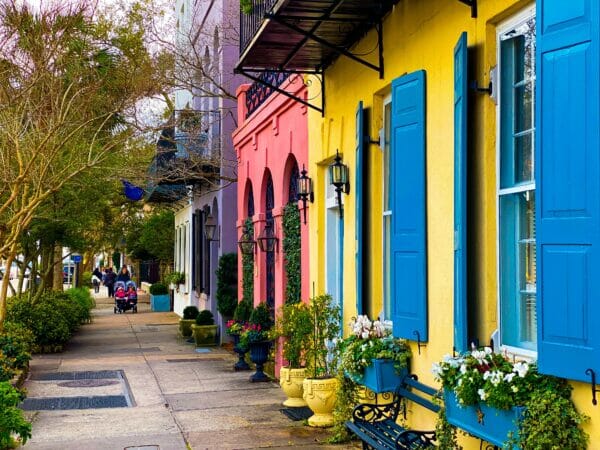
Jessica Aldridge: How far out from the heart of Charleston does this urban sprawl spread? And what has been the effect of the quality of life, transportation and really economic disparity?
Susan Crawford: Charleston is really America in small, you can think of it that way. That little peninsula is like a tiny Manhattan with boroughs on the outside. The boroughs cover lots and lots of marshland, much of it very low. Really, we haven’t talked about this yet, but most of the land on the peninsula, let’s put it this way, a third of the houses and businesses on that historic peninsula are at five feet or less above sea level. And then off the peninsula, most of that land is around ten feet or so above sea level. So very, very low. That whole topography is covered with coastal rivers and marshes. And it’s like 40,000 interconnected watersheds.
So the sprawl, which is substantial, covers a ton of marshland, is very low. Almost no public transportation in this area. Many, many cul de sacs and developments and very, very congested traffic situation. So when the current mayor, Mayor Tecklenberg, entered office in 2016, he thought his main problem was going to be traffic. It has turned out that he’s had to cope with a lot of flooding and some major storms since he got there, which has triggered thinking about what’s going to happen to Charleston, South Carolina, as the sea levels continue to rise.
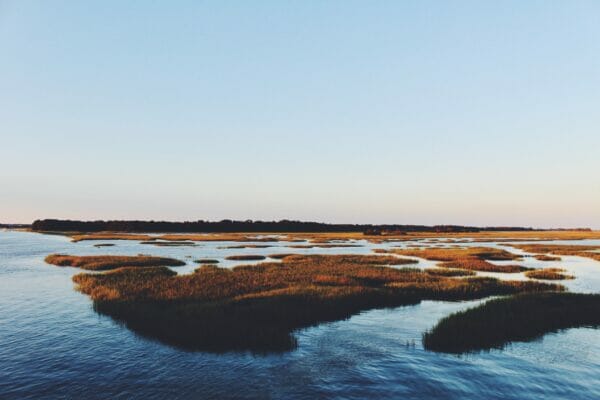
Jessica Aldridge: And that was my next question. From an environmental perspective, what is currently happening to the peninsula? And that marshland that is Charleston, South Carolina? And my brain was like, are we supposed to build on marshland?
Susan Crawford: Weirdly, our own federal government effectively subsidizes or encourages people to build on floodplains. And Charleston has seen a lot of that building. Really, all of it is in floodplain, meaning that it expects to experience a major storm. About the chance of that is at least 1% a year. And actually, that percentage is increasing rapidly. Charleston’s seeing a lot of plain old tidal flooding. In 2022, it flooded 70 times, and just from high tide flooding. And in 2019, it flooded 89 times. And we know that come 2050 or so, that flooding is going to rapidly accelerate. It’s going to be flooding five or ten times as much as it does today. As the seas rise, Charleston will be seeing about 3ft of sea level rise by, let’s say, 2070, and at least 5ft by the end of the century. So given the extraordinarily low lying topography of the city of Charleston and the crazy amount of development there, it is facing a sea level rise crisis. It is likely that much of the region will be chronically inundated by about 2070. Or, in other words, that the flooding will be so constant, and the groundwater, by the way, is so high that flooding will have nowhere to go. And it’ll be miserable for the people who are living there.
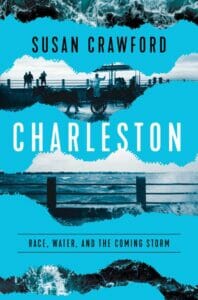
Jessica Aldridge, Co-Host and Producer of EcoJustice Radio, is an environmental educator, community organizer, and 15-year waste industry leader. She is a co-founder of SoCal 350, organizer for ReusableLA, and founded Adventures in Waste. She is a former professor of Recycling and Resource Management at Santa Monica College, and an award recipient of the international 2021 Women in Sustainability Leadership and the 2016 inaugural Waste360, 40 Under 40.
More Info/Resources:
Coastal Flood Resilience Project: https://www.cfrp.info/
Podcast Website: http://ecojusticeradio.org/
Podcast Blog: https://www.wilderutopia.com/category/ecojustice-radio/
Support the Podcast: Patreon https://www.patreon.com/ecojusticeradio
PayPal https://www.paypal.com/donate/?hosted_button_id=LBGXTRM292TFC&source=url
Executive Producer: Jack Eidt
Host and Producer: Jessica Aldridge
Engineer and Original Music: Blake Quake Beats
Episode 170
Originally Published 3 April 2023, Updated 2 August 2023













Pingback: Rising Tides, Retreating Homes: California Against the Sea - WilderUtopia